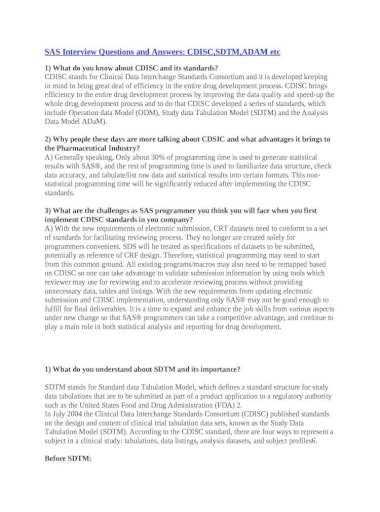
Question: What is the difference between SAS function and procedures? Answer: Functions expects argument value to be supplied across an observation in a SAS data set and procedure expects one variable value per observation. Question : What is the difference between reading the data from external file and reading the data from existing data set? Answer: The main difference is that while reading an existing data set with the SET statement, SAS retains the values of the variables from one observation to the next. For example: data work.calculus set p end=last If last run Where Calculus is a new data set to be created and Comp is the existing data set last is the temporary variable (initialized to 0) which is set to 1 when the set statement reads the last observation. Question: Given an unsorted dataset, how to read the last observation to a new data set? Answer: using end= data set option. Whereas If want to process certain variables and do not want them to appear in the new data set, then specify drop= data set option in the data statement. Question : What is the difference between using drop= data set option in data statement and set statement? Answer: If you don‘t want to process certain variables and you do not want them to appear in the new data set, then specify drop= data set option in the set statement. Question: What is the function of Stop statement? Answer: Stop statement causes SAS to stop processing the current data step immediately and resume processing statement after the end of current data step.



Placing an explicit OUTPUT statement in a DATA step overrides the automatic output, so that observations are added to a data set only when the explicit OUTPUT statement is executed.

Question: What is the function of output statement? Answer: To override the default way in which the DATA step writes observations to output, you can use anOUTPUT statement in the DATA step.


 0 kommentar(er)
0 kommentar(er)
